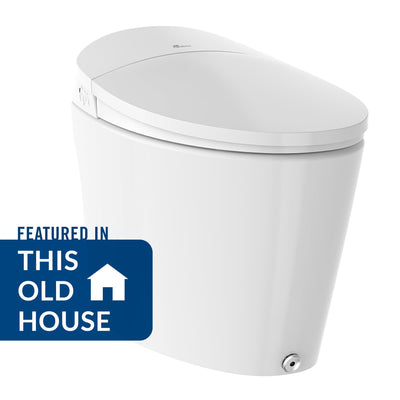Toilet Paper In Decline
You probably already know search term statistics are readily accessible as a feature of Google Trends. ( Try it sometime. It’s a fun tool to play with when you have a few minutes waiting for a meeting to start or make you look busy in public places so no one talks to you.) You may not know that in March of 2020, one particular term increased in popularity by 5000%. The term? “Toilet Paper”.
Yes, during the week of March 15 – 21, the term “toilet paper” had reached its peak measurable popularity among US Googlers- before beginning a precipitous dive back down to where we are today (a modest 100% increase in the term’s popularity.) People have ostensibly learned enough about toilet paper. Still, if you were one of those searchers during its day in the sun, you may have happened upon some info that might have made you question the commodity’s practicality, affordability, eco-impact, and whether it actually deserves its place of honor as a prized necessity in the American bathroom.
Here’s a quick look at some ways Toilet Paper may be impacting your household:

Wallet
There are some interesting little nuggets in this fun-fact list, ex: one-ply lasts longer than two-ply, one-ply breaks down more easily, and perhaps most notable (by this author’s estimation) the average household may use one roll of toilet paper every 5 days- which equates to about 73 rolls yearly. However, this popular news outlet estimates the average household (2.6 people) uses closer to 409 rolls per year, which is consistent with reports that the United States is the world’s leading toilet paper consumer. If it’s reasonable to estimate about 0.84 cents per roll, that comes to about $343 annually. There are also plumbing costs to weigh. However dissolvable TP & flushable wipes are advertised to be, septic and sewer clogging is common, and it’s not cheap.

Environment
It’s no news that TP comes from trees. This MarketWatch article from April 2019 examines the “tree-to-toilet pipeline”, an alarming trend in American tissue consumption that threatens some of our planet’s largest and last intact forests. From carbon storage to the wellbeing of wildlife, the potential environmental impact of over-dependency on toilet paper is staggering.

Hygiene
How many folks do you know that wash their hands before using the facilities? For the average TP user, it might not be a bad idea. Since our hands are the primary means by which we carry germs, TP loyalists may be loath to consider what might be transferred back and forth during a facilities session. As unpleasant as this topic may be, we encourage you to delve further. You’ll find no shortage of supporting info that toilet paper might be overrated in the mind of a hygiene-conscious consumer.
What, then, are we to do? While the average American household seems bound by the status quo of toilet paper use, a significant portion of the world’s population gets by just fine with much less, or none. Toilet Paper alternatives are readily available. While some of these don’t reduce germ transfer or decrease waste, bidets are widely trusted worldwide to provide hygienic personal cleaning with no negative impact on the environment. Happily, there are a variety of options available to suit your specific budget. Each American household that discovers the convenience & accessibility of a bidet system is one less household whose wallet, carbon footprint and personal hygiene are at the mercy of toilet paper.
Interested in receiving exclusive discounts and being the first to hear about sales and new product launches? Sign up for our newsletter!
By the way, another search term peaked during the week of March 15-21. We’ll give you one guess. Leave it in the comments.




